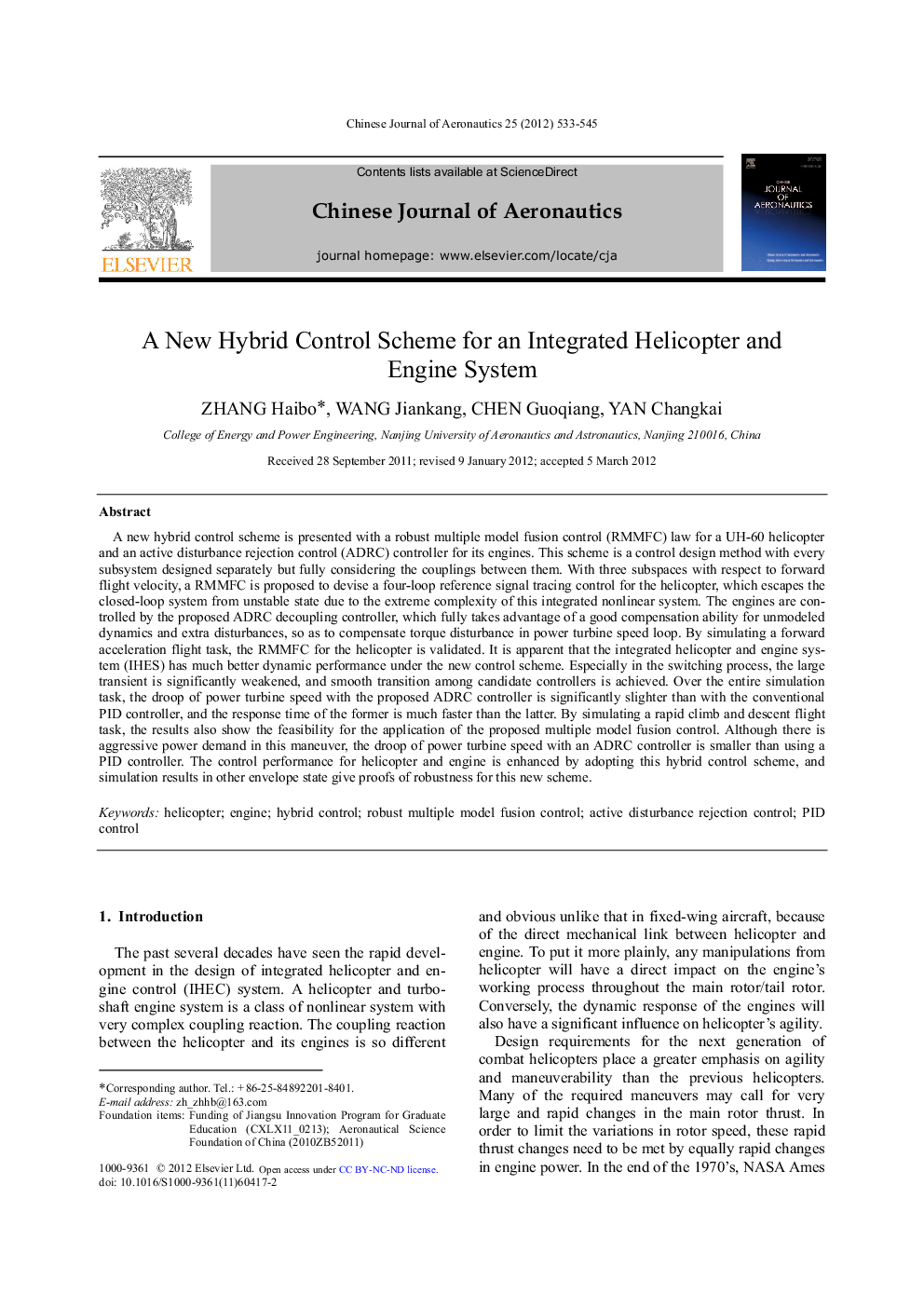| Article ID | Journal | Published Year | Pages | File Type |
|---|---|---|---|---|
| 755347 | Chinese Journal of Aeronautics | 2012 | 13 Pages |
A new hybrid control scheme is presented with a robust multiple model fusion control (RMMFC) law for a UH-60 helicopter and an active disturbance rejection control (ADRC) controller for its engines. This scheme is a control design method with every subsystem designed separately but fully considering the couplings between them. With three subspaces with respect to forward flight velocity, a RMMFC is proposed to devise a four-loop reference signal tracing control for the helicopter, which escapes the closed-loop system from unstable state due to the extreme complexity of this integrated nonlinear system. The engines are controlled by the proposed ADRC decoupling controller, which fully takes advantage of a good compensation ability for unmodeled dynamics and extra disturbances, so as to compensate torque disturbance in power turbine speed loop. By simulating a forward acceleration flight task, the RMMFC for the helicopter is validated. It is apparent that the integrated helicopter and engine system (IHES) has much better dynamic performance under the new control scheme. Especially in the switching process, the large transient is significantly weakened, and smooth transition among candidate controllers is achieved. Over the entire simulation task, the droop of power turbine speed with the proposed ADRC controller is significantly slighter than with the conventional PID controller, and the response time of the former is much faster than the latter. By simulating a rapid climb and descent flight task, the results also show the feasibility for the application of the proposed multiple model fusion control. Although there is aggressive power demand in this maneuver, the droop of power turbine speed with an ADRC controller is smaller than using a PID controller. The control performance for helicopter and engine is enhanced by adopting this hybrid control scheme, and simulation results in other envelope state give proofs of robustness for this new scheme.
